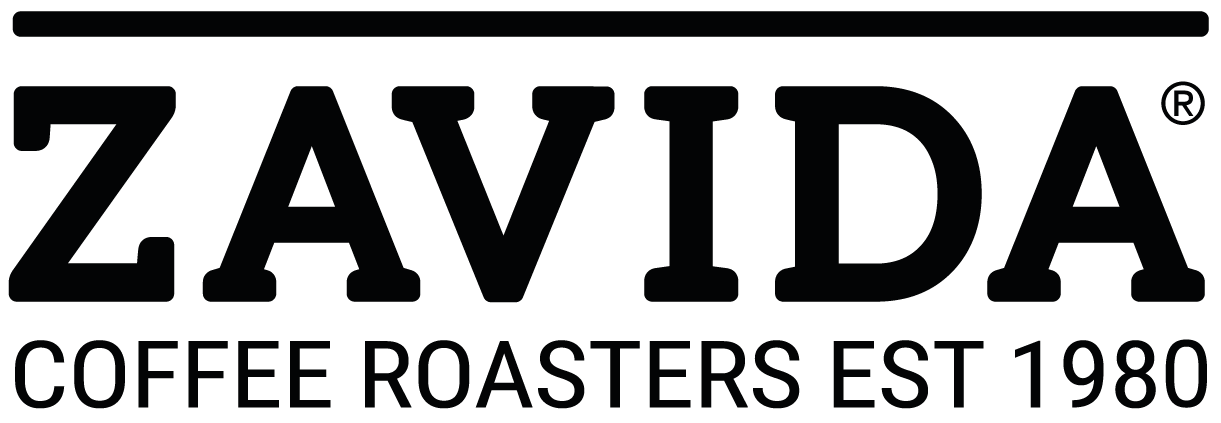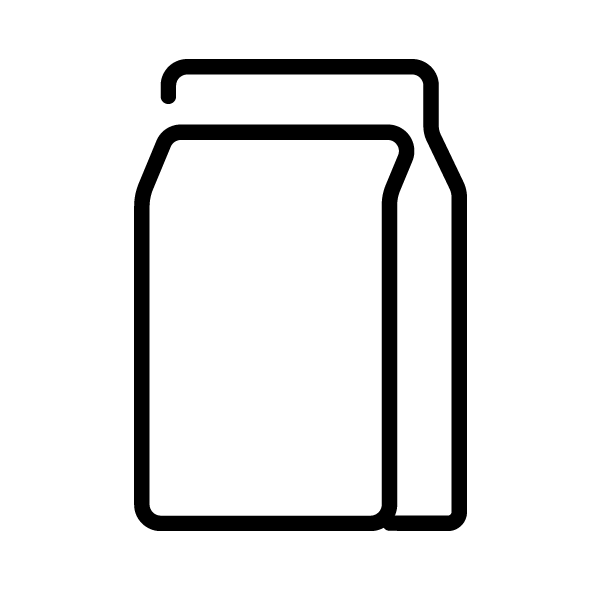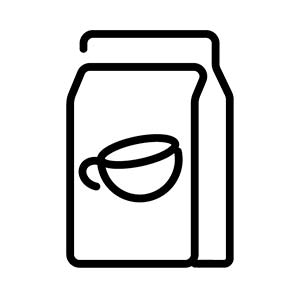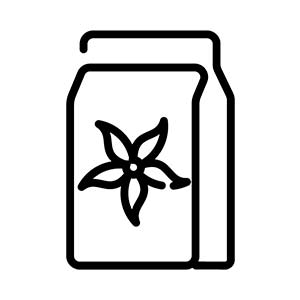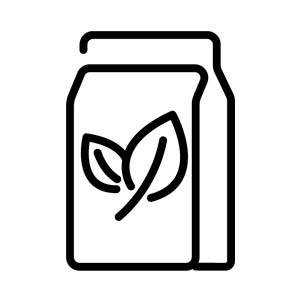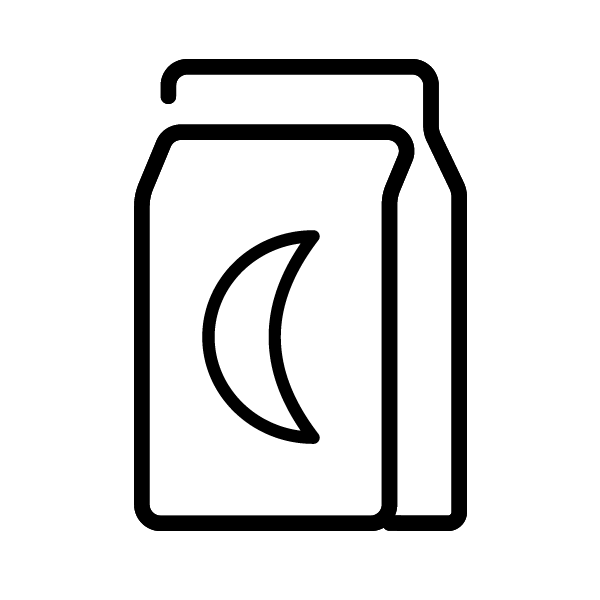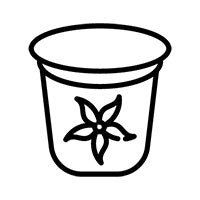Difference Between Single Origin and Blend Coffee
Whether you're a coffee connoisseur or not, it's important to know the difference between single origin coffee and coffee blends. When you hear the names, the description you have in your mind likely isn't far off.

Single origin coffee only uses beans from one physical geographic region or country – sometimes even the same farm! The taste and aroma are distinct and may not appeal to everyone.
For coffee blends, it’s all in the name. Coffee beans from different countries or geographic regions are selected based on their acidity, bitterness, sweetness, and other factors, then mixed to create a balanced-tasting coffee that appeals to many.
There are many different types of coffee on the market. It’s sometimes difficult to choose which one is best for you. In this article, we are going to explain the differences between single-origin and blend coffee to help you the next time you’re trying to decide between the different types available.
Single Origin Coffee
Single origin coffees are labelled as such since they're harvested from the same geographical region. Think Colombian coffee! Those beans are single origin because they all come from the same place.
One huge benefit of single origin coffee is that its flavors are always pure and unique. Single origin coffee is typically consumed black without any added creamers or sugar, which helps to truly savor its incredible, clean taste.
However, single origin coffee is often dependent on the season. Its availability can fluctuate throughout the year due to weather patterns and changes in the region’s climate. This makes single origin more expensive than their blended coffee counterparts.
However, if you like to know exactly where your beans are from and enjoy sipping on a cup of high-quality coffee with a unique taste, single origin coffee is perfect for you.
Most Popular Single Origin Coffees
Many areas around the globe offer single origin coffee, each with a unique set of flavor notes and harvesting environments. The three most popular types of single origin coffee and their unique characteristics are below:
Colombian Coffee
Colombia has one of the best coffee-growing climates in the world. The temperatures are high all year round and the country experiences a large rainfall, being home to the lush Andean rainforest. UNESCO has even made Colombia’s coffee cultural landscape a World Heritage Site.
Colombian coffee is made with passion, sustainability, and quality in mind. There is a real family story attached to each coffee plantation and traditional farming practices have been preserved.
Colombian coffee provides a palette of unique flavors thanks to its envious growing conditions. Generally, Colombian coffee is medium-bodied, acidic, and well-balanced, with sweet notes of caramel. Depending on the exact farming region, it can also have nutty, chocolatey notes or floral, fruity notes.
Juan Valdez
Following the stock market crash of 1929, Colombian coffee farmers encountered an international market crisis. The amount of coffee sold was significantly lower than the amount being produced around the world. At this moment, Colombia’s coffee-producing rival, Brazil, was attempting to lead the global market.
Therefore, to stay relevant, the Colombian government and their coffee farmers decided to create the Colombian Coffee Growers Federation (FNC) to protect the status of Colombian coffee as a single-origin product.
The FNC hired a marketing agency in New York City to create the Juan Valdez brand in 1959 for a promotional campaign. Today, Juan Valdez is the number one source of single origin Colombian coffee in the world. It is the most popular Colombian coffee brand on the market and offers a whole range of authentic, premium Colombian coffee products.
The FNC is one of the largest rural NGOs on the planet. It supports all Colombian coffee growers by helping them to conduct scientific research, improve their quality of life, and promote their coffee with effective marketing campaigns like this.
Therefore, the Juan Valdez brand belongs to Colombian coffee growers. Juan Valdez himself is a mustached fictional coffee grower who has been featured on billboards and product labels for 100% Colombian-grown coffee since 1959.
The Juan Valdez marketing campaign is a massive success internationally. Before this campaign, coffee was mainly sold as coffee blends from multiple countries and regions. Juan Valdez catapulted single origin coffee to the forefront of the coffee scene, placing Colombian coffee directly at the center.
It was the first brand to highlight the exact origin of its coffee beans, flipping the whole coffee industry on its head. Ever since then, single origin coffee has grown in popularity and is now perceived as a high-quality specialty product.
Brazilian Coffee
Another big source of single origin coffee is Brazil. The first coffee seed was planted in Brazil in 1727 when Brazil was under Portuguese rule. The seed is said to have been smuggled in from French Guiana by Sergeant Major Francisco de Melo Palheta. Just over a century later in 1840, Brazil was declared the leading producer of coffee worldwide.
Brazil has a diverse climate with well-defined seasons, making it an ideal country for growing coffee. It has about fourteen major coffee-producing regions and is still the largest coffee-producing country in the world today, producing a whopping 30% of the world’s supply.
Although there are many varieties of coffee in Brazil, they tend to be low in acidity and smooth with mild, sweet flavors due to the country’s low altitude. These flavors generally consist of chocolate and nutty notes. It is rare to find fruity, floral, acidic coffee in Brazil, but the coffee grown in slightly higher altitude areas can have subtle citrus notes.
Brazil mainly produces Arabica coffee and most of their coffee is produced via the pulped natural method. The Mogiana region in southern Brazil arguably produces the best Brazilian single-origin coffee, the Brazil Santos. This is a classic Brazilian coffee, smooth in texture with delicious notes of hazelnut and chocolate.
Brazilian coffee used to be considered of lower quality, but in recent years, their cultivation and harvesting techniques have greatly improved. The price may be lower than other coffee beans, but this is due to Brazil being the top producer of coffee in the world and therefore having a huge supply. It is fair to say that Brazil is now the most reasonably priced, high-quality source of single origin coffee worldwide.
Ethiopian Coffee
Ethiopia is in Eastern Africa and landlocked by Eritrea, Somalia, and Kenya. Being so close to the equator, Ethiopia’s climate is generally hot and dry throughout the year. It lies within the tropics and has a high-altitude, mountainous landscape, and the low-altitude regions are arid and experience lower rainfall. This creates the optimal space for year-round plant growth. Thanks to its ideal growing conditions, Ethiopia coffee exudes some of the most dynamic flavors around the world.
Ethiopia is said to be the only country where coffee grows naturally and wasn’t imported. It is considered the origin of the coffee plant. Legend has it that Ethiopian coffee began when a goat herder noticed that his goats were given an energy boost after munching on coffee cherries. The goat herder was curious and approached a local community of monks with these cherries to ask for their advice and wisdom. The monks then discovered that adding these coffee cherries to water created a magical energizing beverage, which we now call coffee.
Coffee swiftly became Ethiopia’s biggest export. The country has six main coffee-producing regions which each contain sub-regions. The coffee produced is notorious for being acidic, light to medium-bodied, with floral, fruity, wine-like flavor notes. It has a distinct aroma and a berry-like tartness.
Ethiopian coffee is typically grown in one of three main regions: Sidamo, Harar, and Yirgacheffe.
Sidamo Coffee
Sidamo coffee is characterized by its smooth body and sweet citrus fruit flavor notes. It has a strong taste of lemon and cane sugar. It is low in acidity and has a delicious berry aftertaste.
Harrar Coffee
The flavor profile of Harrar coffee is composed of strong notes of red wine, floral tones, and fruity flavors. It is full-bodied, carries hints of blueberry, strawberry, apricot, and has a spicy aroma.
Yirgacheffe Coffee
Ethiopian Yirgacheffe coffee is light to medium-bodied and has a distinct fruity flavor profile and floral aroma. These features are attributable to it being grown in high altitudes and processed in water before being dried on a raised bed. It is acidic yet lighter-bodied than Harrar coffee and is best consumed using slow brewing techniques such as the pour-over method.
Coffee Blends
Coffee blends are essentially what the name says – a blended mix of beans from different locations. Consequently, their production process isn’t really affected by seasonal changes – beans can be used from regions with different growing seasons and environments. This allows the flavor to stay consistent and easily available year-round.
Did you know that it's not uncommon for a coffee blend to contain beans from up to 10 locations? However, coffee companies typically create their coffee blends using beans from two to three different regions or countries.

Coffee blends tend to have mild flavor notes and be smooth in texture. They are ideal for making lattes, cortados, and other espresso-based drinks. Since they come from different areas, their flavor profile tends to be consistent throughout all months of the year. A reduction in one type of bean’s harvesting conditions wouldn’t vastly change the flavor composition of the blend as a whole. This makes coffee blends ideal for commercial use.
Blended coffee is well-rounded and balanced, which appeals to a large demographic. Coffee blends are put together by carefully considering which beans would complement each other and create a pleasing taste. Creating new coffee blends requires a high level of knowledge about the characteristics of different coffee beans from all over the globe. It isn’t just a simple “trial and error” process.
History of Coffee Blends
The most famous coffee blend appeared in the late nineteenth century when Dutch traders blended Java coffee beans from the island of Java and Mohka coffee beans from Yemen. This blend was simply given the name Mokha Java and is deemed the very first coffee blend to exist. Its availability has unfortunately dwindled in recent years.
New blends are constantly being produced. At Zavida, we offer two delicious coffee blends. Our Charles’ Private Stock Coffee provides a unique selection of aromas, and a well-balanced, smooth flavor profile and our Premium French Roast Coffee consists of strong, aromatic, flavorful, beans that have been slow-roasted to perfection.
Related Blog Posts
If you enjoyed this article, we have other blog articles on other topics you might enjoy!
How to Make Espresso Without an Espresso Machine
Zavida: Single Origin and Coffee Blends Provider
At Zavida, we offer a variety of single origin coffee and coffee blends. Whether you want to try our single origin coffee or a coffee blend, you're bound to love trying our wide range of coffees. We can't wait to hear about your favorite!
For more coffee-related information and advice, we invite you to visit our blog or contact us. We love hearing from you!
